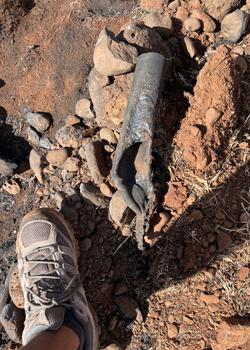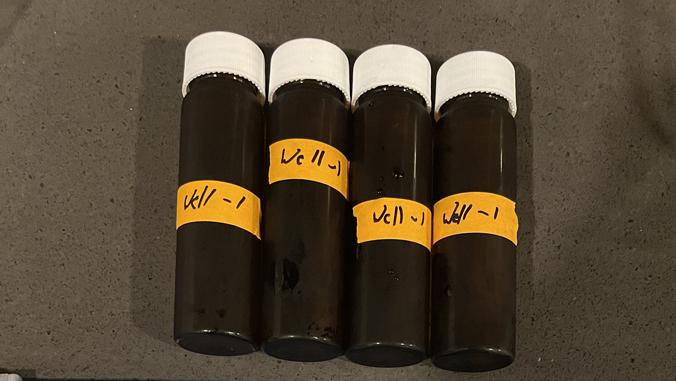Safety of Maui drinking water after the August wildfires is the focus of UH research
As recovery efforts continue on Maui in the aftermath of the devastating August wildfires, a team from the University of Hawaiʻi at Mānoa and UH Maui College are working to address another possible impact of the disaster, contaminated drinking water.
Working in collaboration with local water officials, UH scientists and graduate students are testing the water for contaminants created by the incineration of plastics, vehicles, household chemicals and other sources.
The UH Mānoa Water Resources Research Center is leading the effort and launched the Maui Post-Fire Community Drinking-Water Information Hub on Aug. 21 , less than two weeks after the Aug. 8 fire.
Chris Shuler, a hydrologist with WRRC; Andy Whelton, a fire disaster specialist from Purdue University; and UH graduate students also started a tap-water quality testing and outreach program. The program was started as a wholly volunteer effort by dedicated UH faculty and students, and they are in the process of applying for funding directly from UH, local nonprofits and NSF to make the program sustainable in the near term.
“We realized there was an information gap,” said Shuler. “We responded to that need by developing an information hub to help put all of the information in one place that is easily accessible for people. Another part of our response includes a request form, where Maui residents can ask WRRC to take samples of their drinking water to test for contaminants.”
The team has collected samples from Kula and Lahaina that are being tested for contaminants in labs on Maui and Oʻahu. Ten samples had been tested as of Aug. 27 and about 60 more are headed to the labs.
“We were able to quickly respond to the terrible disaster in Maui because the testing and communications infrastructure was already in place from WRRC’s response to the Red Hill water contamination crisis on Oʻahu,” said UH Mānoa WRRC Director Thomas Giambelluca in a press release. “The day after fire devastated Lāhainā and parts of Kula, we were asking ourselves how we could help and fortunately Chris Shuler, who is based on Maui, was already on the island and got the process started immediately.”
WRRC connected with Whelton and other fire disaster specialists on Maui to help examine the situation and provide guidance to the Maui County Department of Water Supply, using expertise from responding to wildfires in California and Colorado.
“It has developed a lot of connections between scientists, environmental stewards and people on Maui and in Mānoa because everyone is united on a common goal towards response and recovery,” said Shuler. “We are working at the community level with the sampling program. But WRRC has also had an impact at the county level in working with the Department of Water Supply and helping provide expertise with Whelton who has responded to fires on the mainland.”
The Maui Department of Water Supply issued a water advisory a day and a half after residents were allowed back in their homes in Kula. The advisory was put in place because of possible pyrogenic contaminants (potentially toxic compounds generated by high temperatures), specifically volatile organic compounds and semi-volatile organic compounds that come from heated or melted plastic pipes that leaked into the water system.
The testing program, although it is not a part of the regulatory decision making, will nonetheless help to build community trust and contribute towards the process of providing residents and county the information they need to decide when it is safe to drink the water. The UH team said the program will remain in place as long as it is needed.
Other UH faculty involved in testing for drinking water contaminants are WRRC’s Aurora Kagawa-Viviani, Mia Comeros, Catherine Rong and numerous UH Mānoa and UH Maui College undergraduate and graduate students.

















